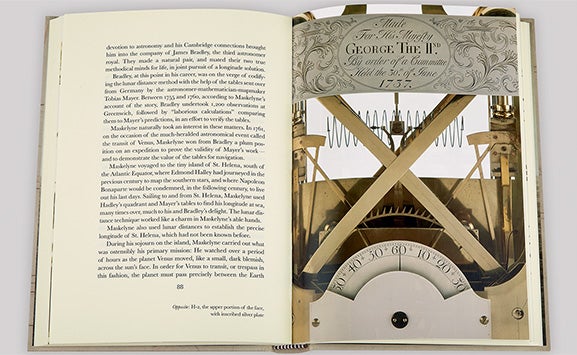Picture Editor Laura Canter on John Harrison’s ‘fantastical machines’
As I began researching images for Longitude, I paid a visit to the Royal Observatory in Greenwich to see John Harrison’s famous chronometers. As I stood in front of the glass cases, I found myself in awe of their beauty and complexity, and realised straight away that these fantastical machines should be the focus of the picture selection, and a tribute to the man who dedicated his life to solving the problem of longitude.
The images showcase the various elements of the chronometers and have been chosen in recognition of his struggle against a scientific elite who believed the solution was a lunar, not a mechanical one. Pen-and-ink drawings in Harrison’s own hand show the early stages of development and the intricate workings of each machine, while handwritten notes detailing technical improvements reveal the thoughts of a man in search of perfection. Following these original designs, photographs of the complete machines in all their glory are complemented by close-up shots of their inner mechanisms and beautiful decoration.
 The 2014 Folio edition of Longitude[/caption]
The 2014 Folio edition of Longitude[/caption]
Drawing of the layout of the movement of H-4, 1755–9. (© The Worshipful Company of Clockmakers' Collection, UK/The Bridgeman Art Library)
The binding image is a detail from Harrison’s own drawing of the rear part of H-3, and pays homage to what Harrison called his ‘curious third machine’. H-3 contains 753 separate parts and took 19 years to make, only to be superseded by Harrison’s much smaller chronometer, H-4, completed around the same time. Though it was due to be tested simultaneously in 1761, John Harrison withdrew H-3 from the sea trial at the last minute, gambling everything on H-4 – the chronometer that ultimately won him the Longitude prize in 1773. Read more about the new Folio edition of Longitude here. [caption id="attachment_2352" align="aligncenter" width="290"] The 2014 Folio edition of Longitude[/caption]
The 2014 Folio edition of Longitude[/caption]

